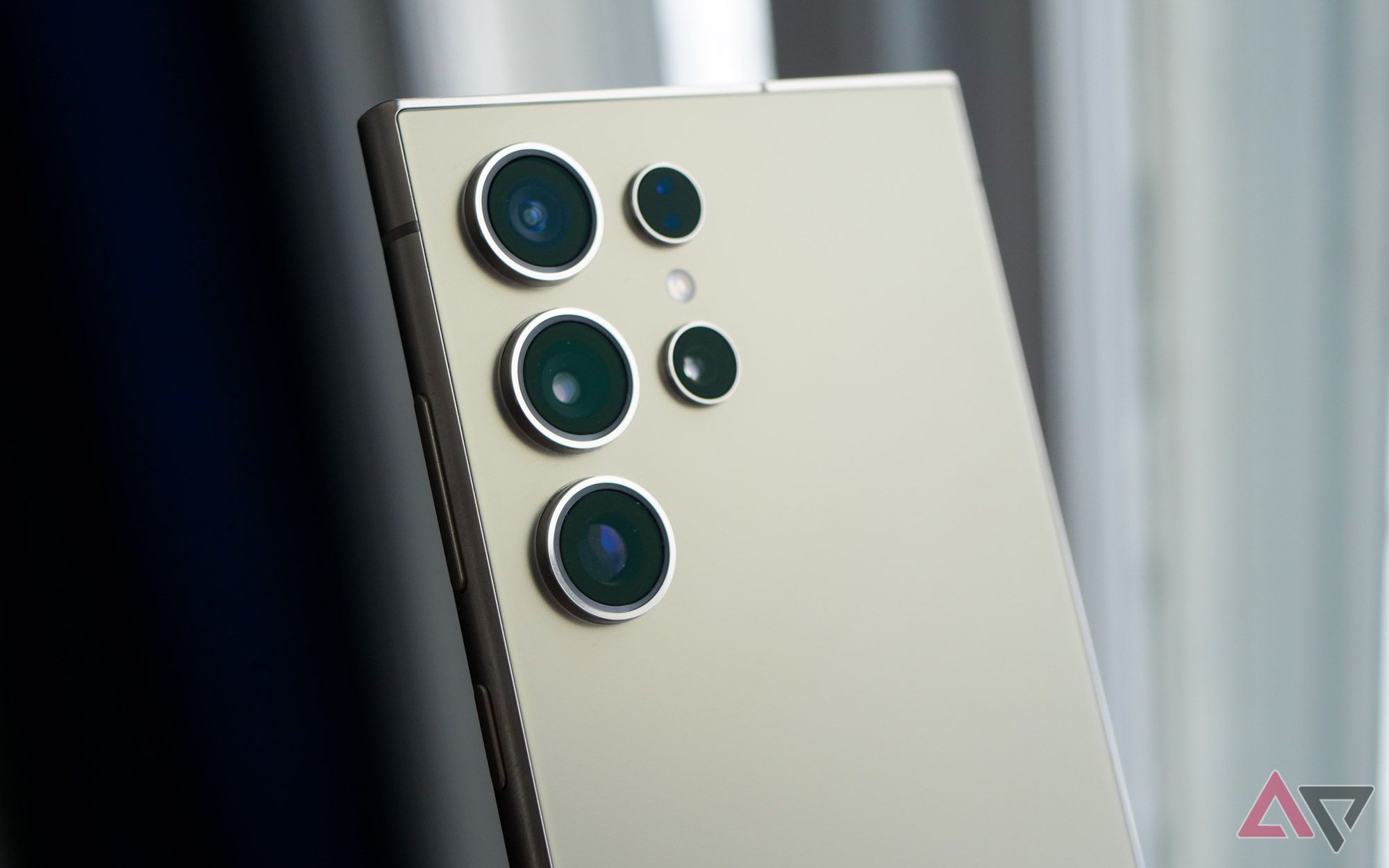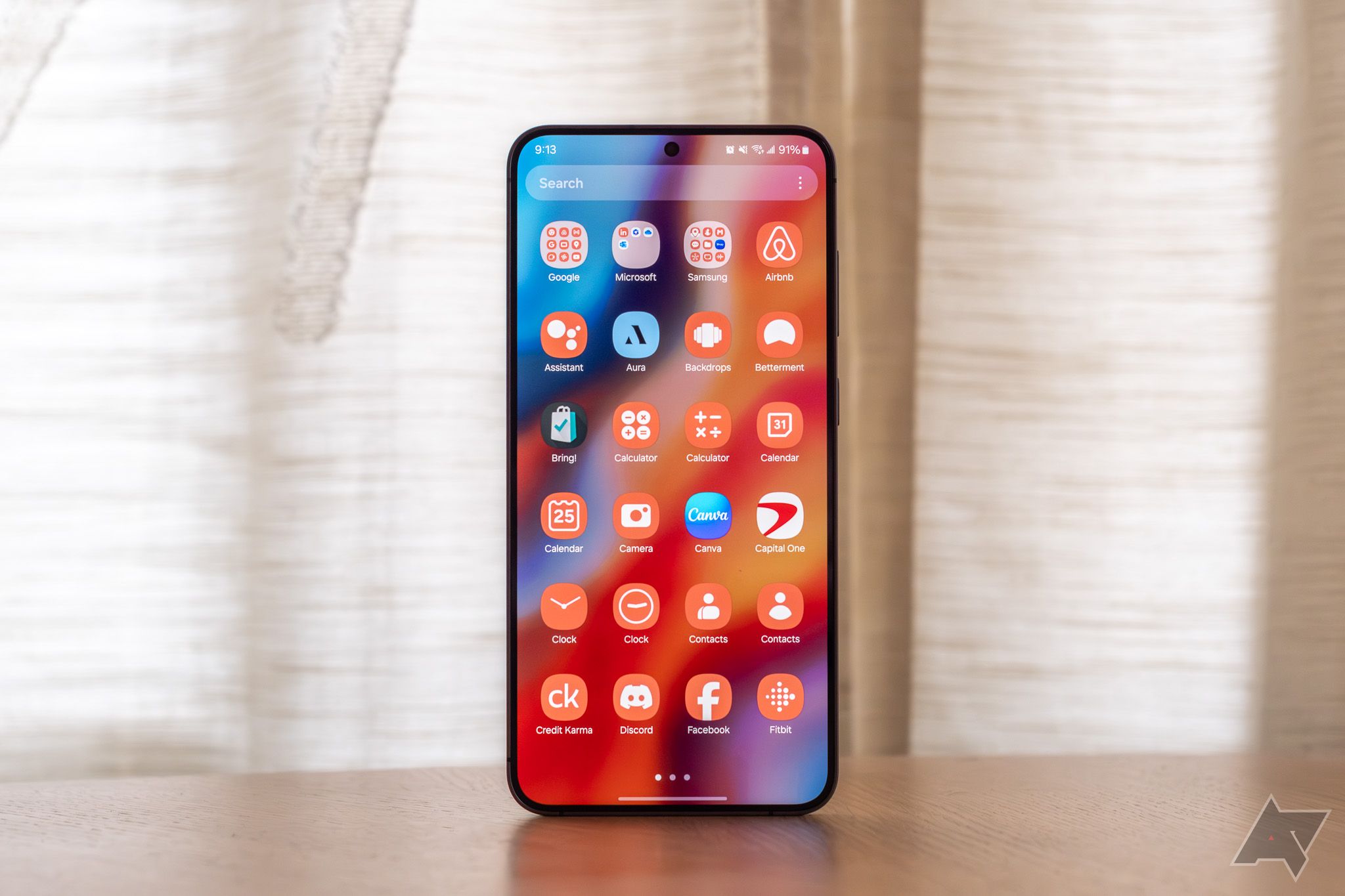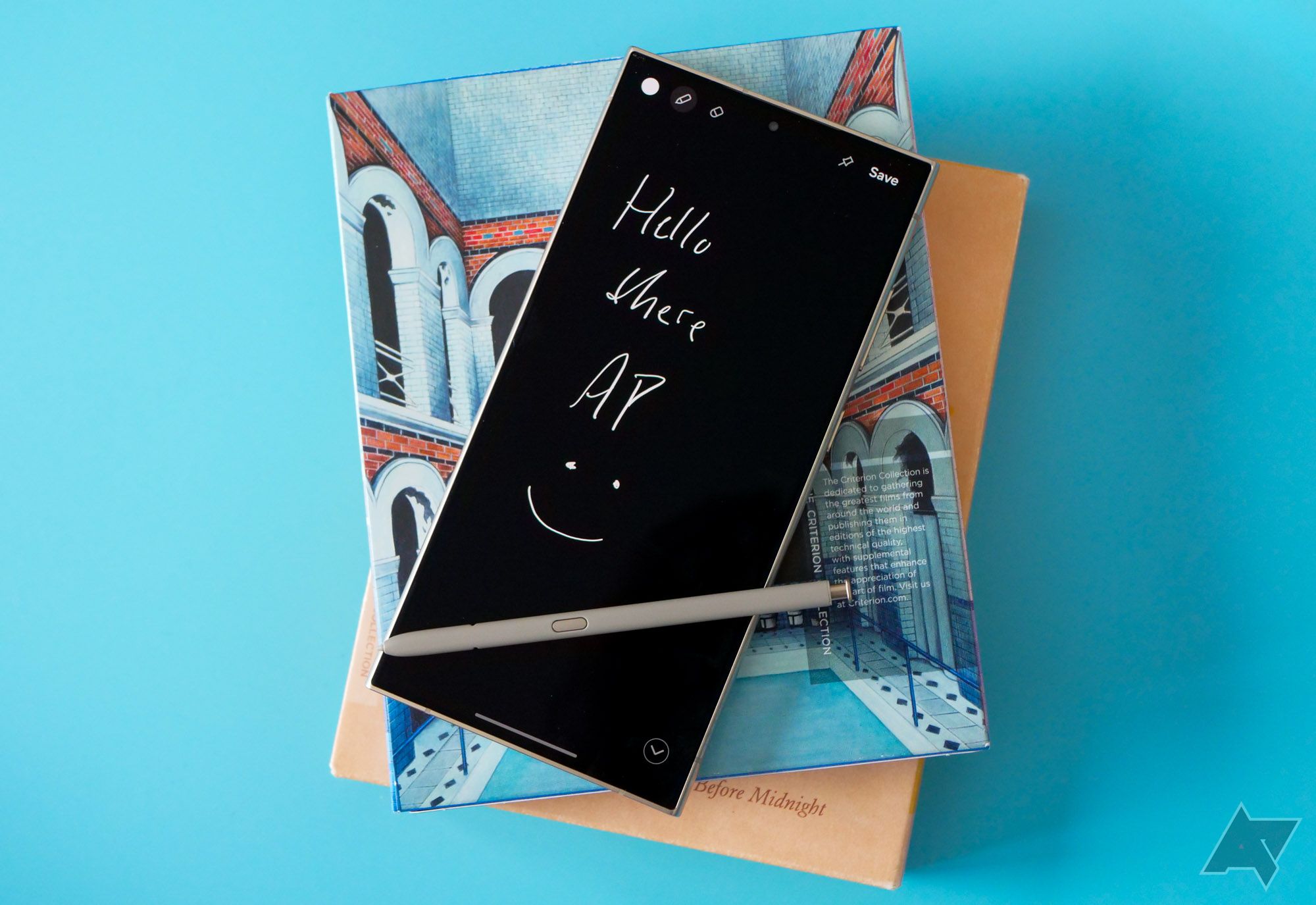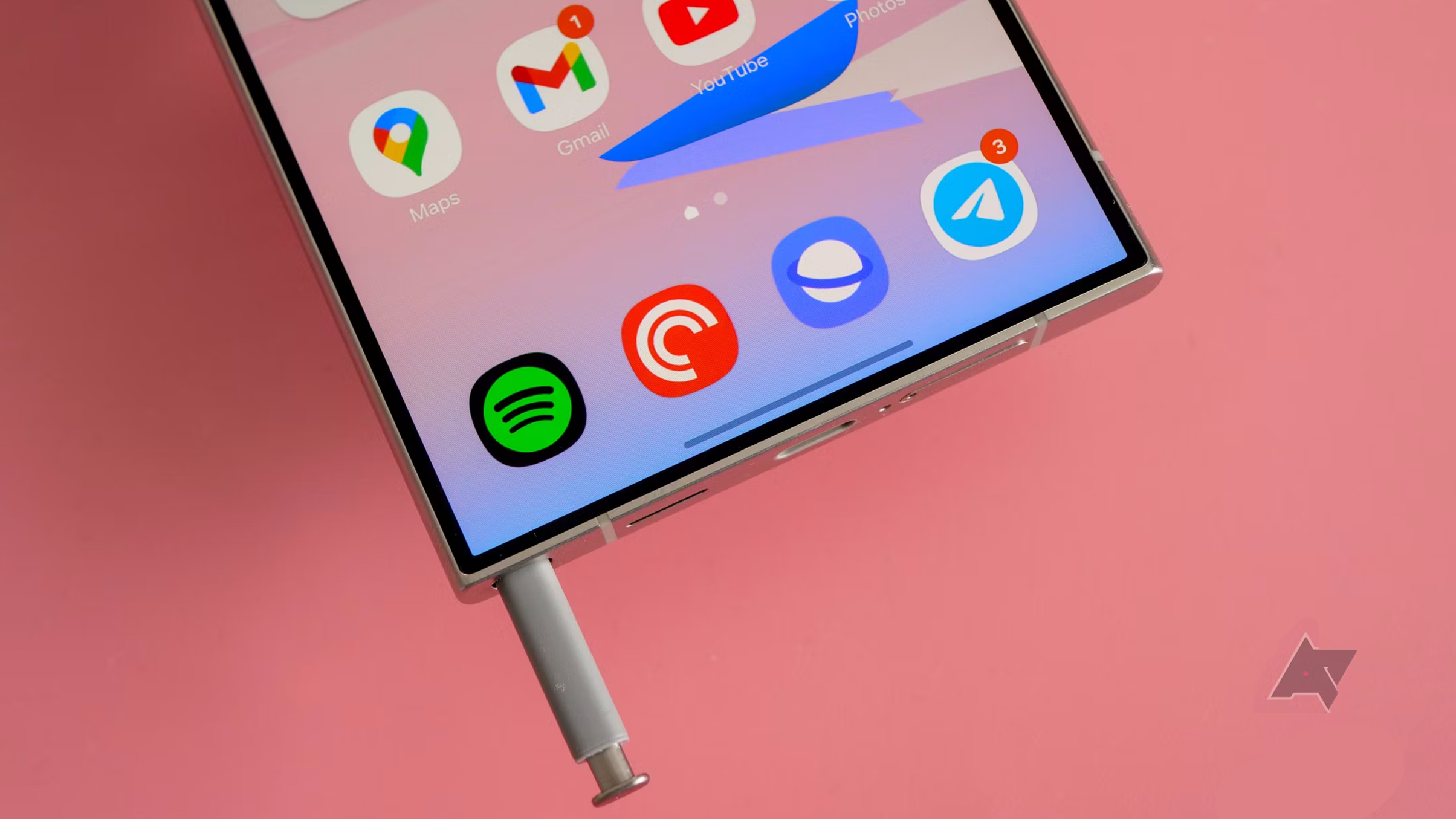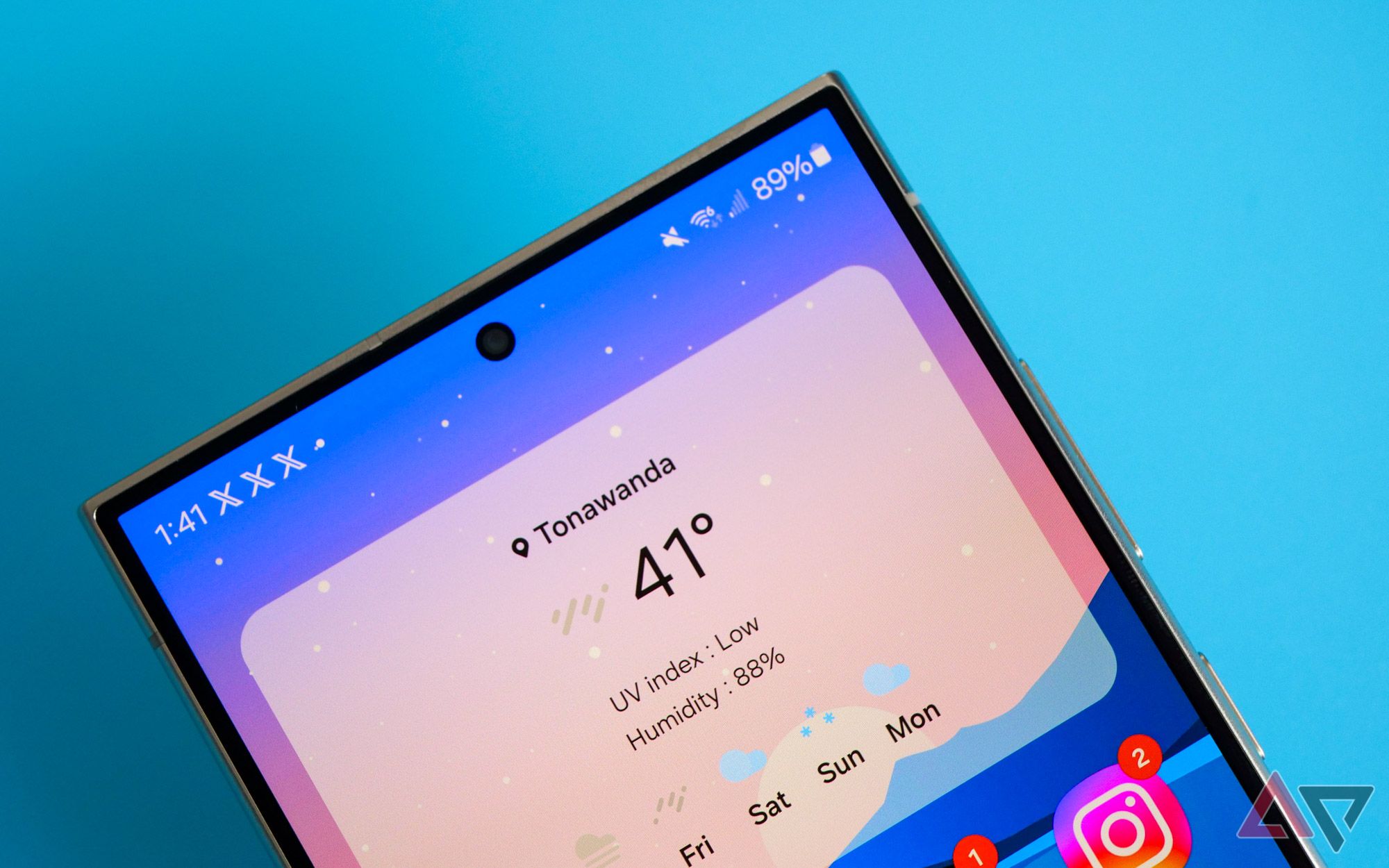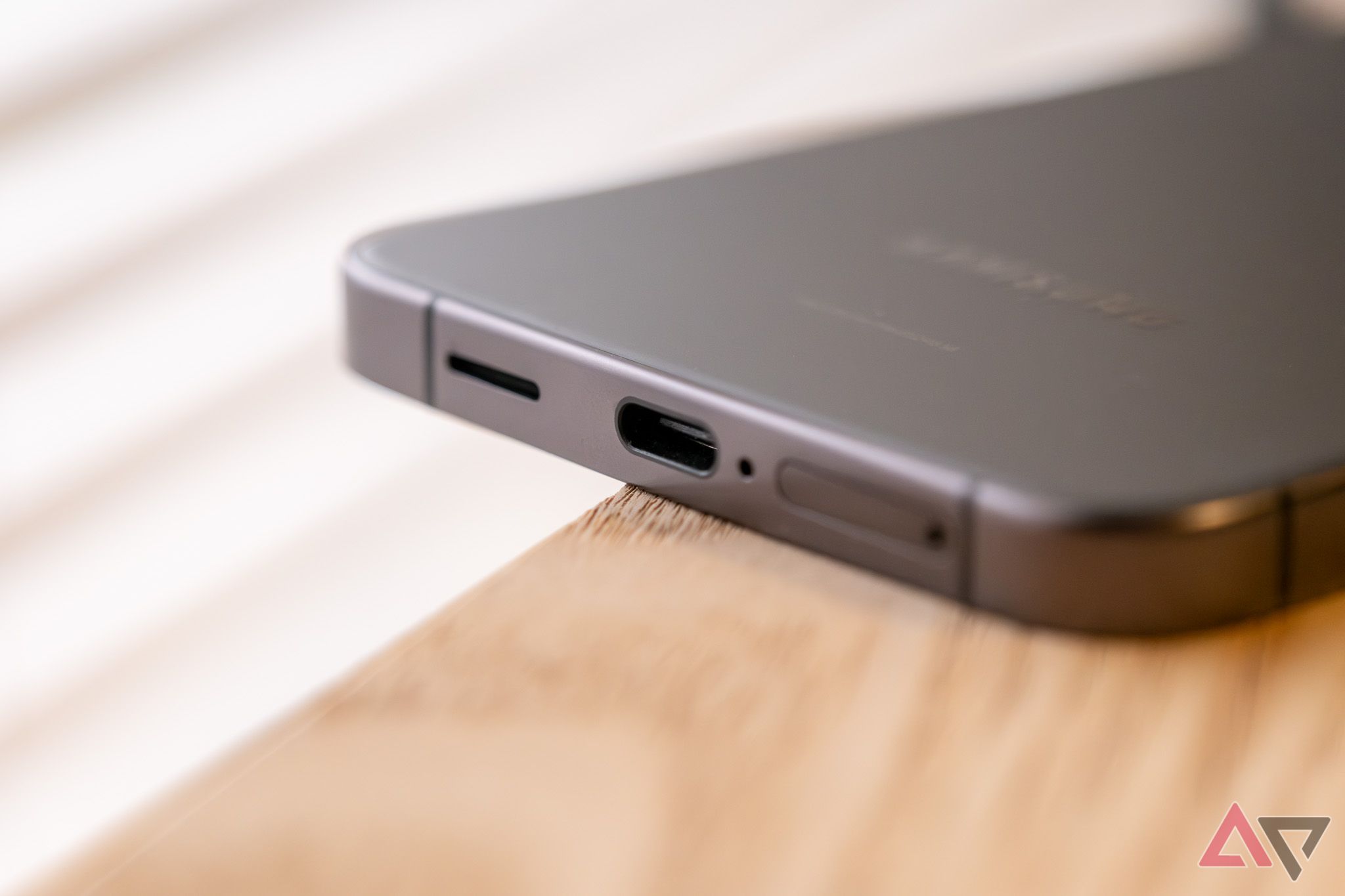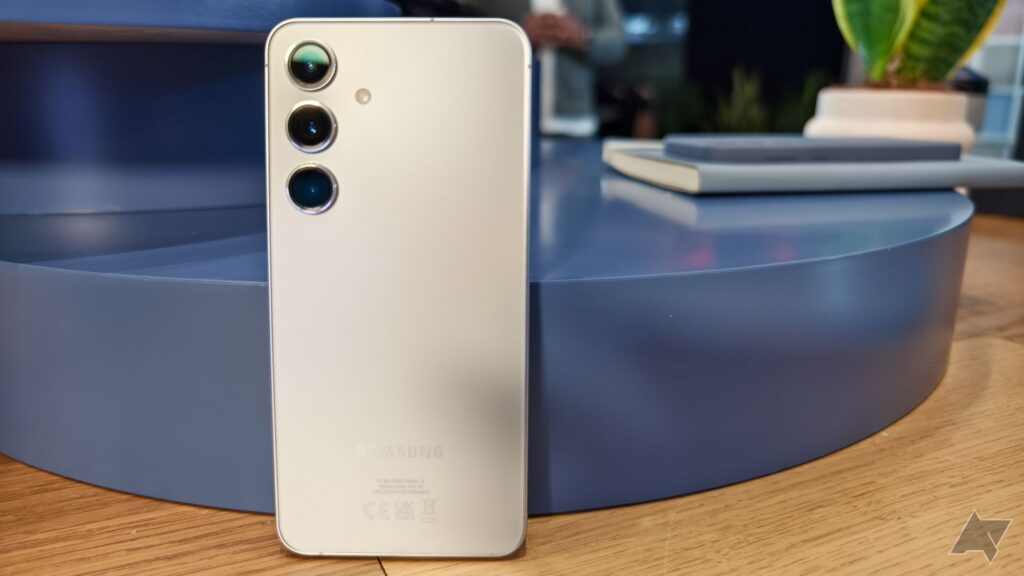-
Samsung Galaxy S24+
A midsize success
A refined package built to last 7 years
The subtle adjustments to the S24+ compared to its predecessor make it one of the best large-screen phones without appreciably increasing its actual size and weight. The premium design, powerful hardware, and constantly improving software make it a hard option to pass up.
Pros- Nearly unbeatable display
- Reasonable size and weight
- Excellent performance
Cons- Few changes from the S23+
- Gets the Exynos SoC in Europe
- Misses out on Wi-Fi 7
-
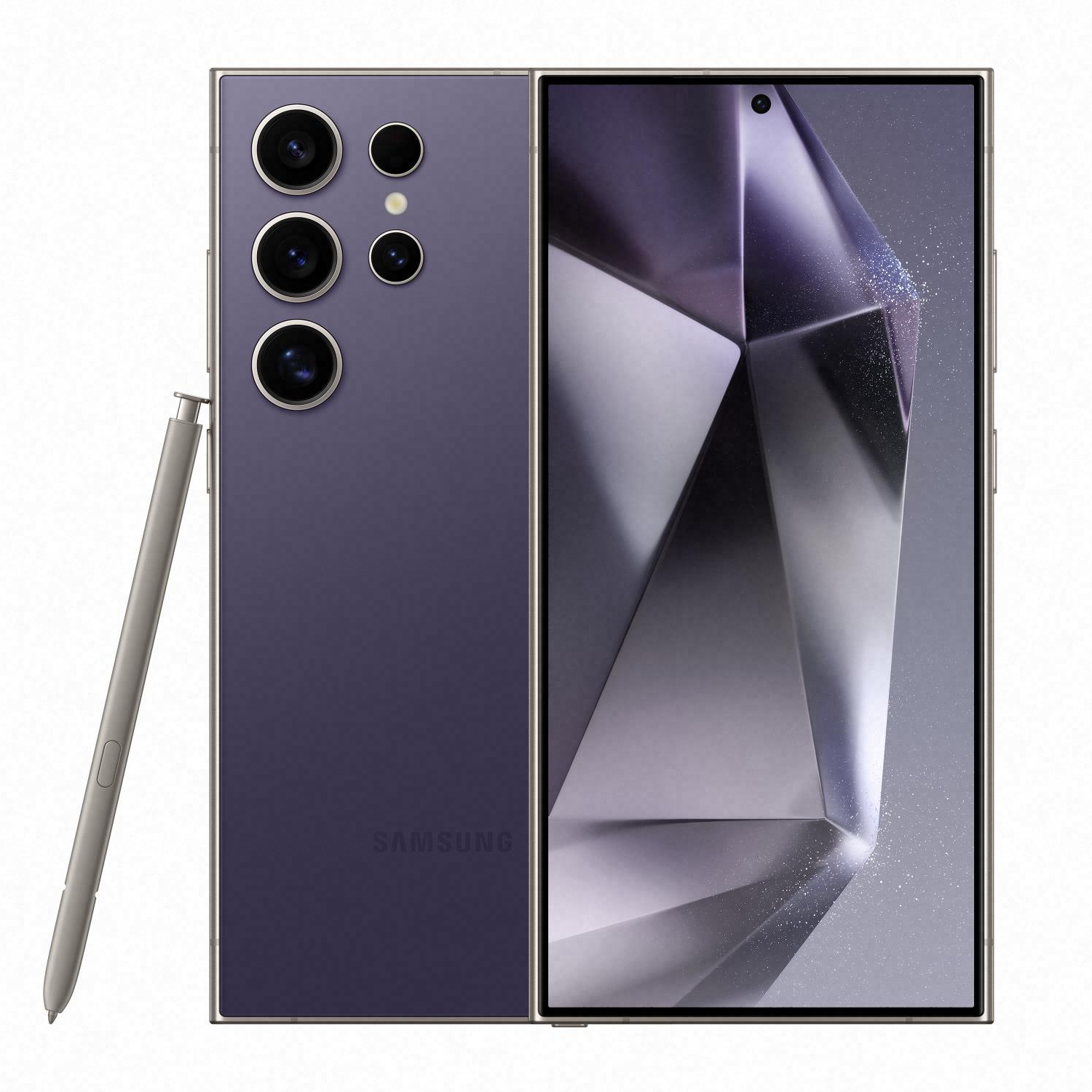
Samsung Galaxy S24 Ultra
Large and in charge
Can’t be topped in specs or price
The biggest, most refined Galaxy yet, the S24 Ultra may be overkill, but it’s hard to ignore. Performance, battery life, and camera specs are out of this world, as is the next-level Android update lifespan Samsung promises.
Pros- Tons of screen space
- Ultra-high camera resolution
- Integrated S Pen
Cons- A bit big for some
- Camera still gets blurry
- Costs an extreme amount
Samsung’s Galaxy S24 family may not be some revolutionary redesign, but it does offer some worthwhile generational upgrades worth considering — and these remain some of the best Android phones around.
While the base model S24 hardly stands out from the S24+, the S24 Ultra sports some key upgrades that make it a worthwhile choice for those who demand the best. But are those upgrades worth the newly increased price? In many cases, yes, but not for everyone.
Price, availability, and specs
Right off the bat, price differentiates the two high-end devices more impactfully than almost any other aspect. Neither’s cheap, of course, but the 256GB Ultra checks in at $300 more than the $1,000 Plus. Moving up to 256GB of either costs $120, the Ultra’s unique 1TB option demands a whopping $1,660, absent any trade-ins, discounts, or carrier deals.
As far as availability, both reached every major network in every major market immediately upon release at the end of January 2024. That, of course, is unsurprising, as the Galaxy S series has made up the most popular high-end Android smartphone family stateside for the last few years.
-
Samsung Galaxy S24+ Samsung Galaxy S24 Ultra SoC Qualcomm Snapdragon 8 Gen 3 for Galaxy Qualcomm Snapdragon 8 Gen 3 for Galaxy RAM 12GB 12GB Storage 256GB or 512GB 256GB, 512GB, or 1TB Battery 4,900mAh 5,000mAh Ports USB-C USB-C Operating System Android 14 and One UI 6.1 Android 14 with OneUI 6.1 Front camera 12MP, f/2.2 12MP, f/2.2 Rear camera 50MP, f/1.8 OIS main; 12MP, f/2.2 ultrawide; 10MP, f/2.4 telephoto (3× zoom) 200MP, f/1.7 main; 12MP, f/2.2 ultrawide; 10MP telephoto (3x); 50MP, f/3.4 telephoto (5x) Connectivity NFC, UWB UWB, NFC Dimensions 158.5 × 76.2 × 7.6mm 162.6 × 79.0 × 8.6mm Colors Onyx Black, Marble Gray, Cobalt Violet, Amber Yellow, Jade Green, Sapphire Blue, and Sandstone Orange Titanium Black, Titanium Gray, Titanium Violet, Titanium Yellow Display type AMOLED, 1-120Hz LTPO AMOLED, 1-120Hz Weight 197g 233g Charge speed 45W wired, 15W wireless 45W wired, 15W wireless IP Rating IP68 IP68 Price $1,000 $1,300 Stylus No S Pen included Display dimensions 6.7″ 6.8″, 19.3:9 Display resolution 3120 × 1440 3088 × 1440 Charge options USB-C wired, Qi wireless Wired, wireless, reverse charging Cellular connectivity 4G LTE, 5G (sub-6 and mmWave) 5G mmWave & sub-6, LTE Wi-Fi connectivity Wi-Fi 6e, Wi-Fi Direct Wi-Fi 7 Bluetooth Bluetooth 5.3 Bluetooth 5.3
Design
Similar language, different feel
At a glance, these two phones are pretty clearly part of the same family. The color offerings match almost completely, the camera lenses differ in layout, but not much in appearance, and the sizes aren’t very far apart. Picking them up tells a different story, though.
The S24+ looks and feels like a premium device, but the Ultra goes a few steps further and exudes luxury. Squared-off edges (even more than the S24+’s flattened design compared to its predecessor) make it an absolute pleasure to hold and arguably more like an iPhone than ever — a good thing in terms of design. And while you can’t easily tell the two phones’ colors apart in pictures, the bigger one’s titanium bezel and overall finish do look just a touch nicer.
In hand, the difference is even clearer. While only about 4 millimeters taller and wider, you can’t miss the Ultra’s over 10% greater thickness and nearly 20% heavier weight. It’s not quite on the level of a foldable, but it is nearly the heaviest popular flagship slab phone you can buy. In the same vein as the iPhone 15 Pro Max, it doesn’t seem like the fancy titanium frame has done a massive amount in keeping off the grams.
Finally, the Ultra does have a minor leg up in terms of durability. In the race to improve the balance between scratch and crack resistance, the new Gorilla Glass Armor on the front demonstrates remarkable resilience, the likes of which we’ve never seen. That’s decent testimony in favor of this expensive device’s lifespan.
Display
Once again, two of the best
A couple of key things have changed in terms of screen quality since the S23 family, even though there wasn’t a lot to improve on. The S24+ did, at last, receive a resolution upgrade, bringing it back in line with the QHD+ displays of S series Plus models of years past. Both now see a borderline ridiculous 2,600-nit peak brightness, ensuring top-quality HDR performance — although they both still lack support for Dolby Vision, instead defaulting to the less-desirable (but still great) HDR10+ protocol.
The Ultra sports an extra 0.1 inches of real estate, diagonally, and both see a hair more area due to the flattened edges and death of the curved display concept. Other than the brightness upgrade and the aforementioned Gorilla Glass Armor, the Ultra’s screen remains nearly unchanged, which once again places it at or near the front of the pack when it comes to high-end smartphone displays. In comparison, though, the S24+ is as similar to its more expensive relative as it’s ever been.
Software
Almost identical
Samsung went all-in on a next-level software experience this time around, opting to accentuate its latest flagships with machine learning-based tools in lieu of any groundbreaking hardware or design alterations. That means you’ll still get the vaunted OneUI experience, complete with its intuitive and relatively customizable interface. While not every single person’s cup of tea, there are good reasons it continues to get high marks from users and experts alike.
Not unlike Google’s initial AI rollout, Samsung’s advanced feature set is still a work in progress but already shows promise. Interestingly, some of the most useful parts of the Galaxy AI toolset are actually based on Google’s Gemini AI model, which we’d argue is actually a pretty good sign. We also find Samsung’s promise to port some AI features back to the S23 family a good thing — if it does so on the S24’s release, it stands to reason that the S24 series will probably continue to receive new features after next year’s flagship release.
For now, the latest Galaxy software experience remains a somewhat subtle and potentially very promising upside to these two new devices. It remains to be seen how it’ll stack up to Google’s in the long run, but it’s already showing flashes of superiority with, for example, its excellent AI voice recorder. Nonetheless, there are no significant software differences between the two.
Stylus inclusion remains one big usability area where the Ultra still wins, though. As big as the S24+ is, Samsung has reserved the premium S Pen experience for the larger phone, adding a big degree of utility and multitasking ability to its top-of-the-line model. It slides into the S24 Ultra’s body just like always and springs out with a quick touch of its barely protruding cap. Just like its predecessor, the Ultra leaves every other smartphone in the dust as far as stylus performance is concerned.
A new standard in software longevity
Not to be outdone by Google and its slightly less renowned UI, Samsung now guarantees at least seven full Android updates followed by an additional year of security patches. We’re big fans, as this will not only keep these phones in people’s pockets for longer, it should also improve the secondhand market. Will today’s flagships stay on top in 5 years or so, when most power users have moved on to a new top-of-the-line handset? The jury’s still out on that, but they’ll likely still be better than many midrange options, to say the least.
Performance
A neck-and-neck race
Inside each, the latest Snapdragon 8 Gen 3 For Galaxy crunches all the numbers. It’s an overclocked version of Qualcomm’s current flagship SoC and builds on the Gen 2 in terms of both performance and, to a slightly lesser degree, efficiency. We had no complaints about Snapdragon’s last chip, and we don’t have any qualms with this one.
Both phones also contain 12GB of RAM, which means they deliver basically identical performance numbers and are still some of the best in the world. Given the clock speed bumps, minor instruction set improvements, and our early testing numbers, the hardware in these bad boys shouldn’t have any trouble holding up to Samsung’s new 7-year Android update policy.
Battery life
Better than ever
Far removed from the less-than-perfect battery life of the S22+, the S24+ builds on its predecessor’s great battery life. Thanks in large part to ever-improving chip efficiency, we fully expect the S24 series to stay within reach of the best phones for battery life this year. Its SoC underlies a lot of this, with greater efficiency and less thermal waste than ever before. We were unable to kill the battery with a single day of moderate to heavy use. And since they have identical pixel counts and most other hardware, battery life should remain close to the same throughout the lifespan of the Plus and Ultra.
That said, there are a couple of niche areas where the Ultra could fare better in the long run. First, the S24+ tops out at Wi-Fi 6E, compared to Wi-Fi 7 connectivity on the Ultra. That newer standard won’t affect real-world speed in most conditions, but it could make a minor difference in Wi-Fi efficiency a few years down the line when Wi-Fi 7 routers are more common.
Another minor performance and efficiency quibble is Samsung’s continued insistence on using its own Exynos chip in European Galaxy S24 and S24+ models. Granted, early benchmarks indicate the Exynos 2400 might actually be catching up to Snapdragon’s industry-leading hardware by now, but it’s probably not quite there, and the EU S24+ will likely see a slightly shorter battery life.
No change to charging
As far as charging, it’s still OK, but the pickiest among us still have a minor criticism. The 45W peak rate isn’t exactly slow, but it lags somewhat behind its competitors. You’ll get both phones from empty to half-full in about 30 minutes, after which they’ll start to slow. For most users, that’s acceptable.
Considering these phones start at $1,000, we don’t think it’s too much to ask for a speed increase, but it’s also not the end of the world. If you’re not a power user and don’t expect a 50% top-up in just a few minutes, we doubt you’ll have any issues with either.
Cameras
Where are the fixes?
To be clear, Samsung’s cameras don’t stink; far from it. They capture great images and video (for the most part) with bold colors and especially impressive telephoto zoom capabilities. The Ultra does win out here, actually, with a 5× periscope zoom lens that delivers some of the best long-range shooting you’ll find on a phone.
We’re also pleased to note that Samsung’s image processing seems, in both cases, to provide more realistic shadows than it did just last year. That, coupled with a 200MP main lens, leads to some of the finest nighttime still photography yet to feature on a Samsung phone. In terms of hardware, the Ultra’s cameras are better on paper, although they translate only marginally to the real-world experience outside the Plus’s mere 3× optical zoom.
But the meat of the issue remains relevant to both handsets. For $1,000+ smartphones in 2024, Samsung’s apparent inability to perfect motion handling is borderline criminal. Our in-depth reviews discovered marked issues with blurriness in not just fast-moving subjects like our furry, four-legged friends, but even relatively slow-moving objects like a city bus coming to a stop in moderate lighting. The problem’s a little less pronounced in excellent lighting conditions, but we’re still a little puzzled as to why it’s still an issue. While it’s not exactly a deal-breaker, the recurring blurriness holds both back from being some of today’s best phones for photography.
Which one’s right for you?
Bigger isn’t always better, and now more than ever, the midsize Galaxy S resembles its more expensive alternative in many ways. While the market usually chooses the larger of the two (as the Ultra has outsold the Plus by a factor of two in recent years), the S24+ makes a fantastic case as the best all-around package for most people. Its form factor makes it a touch more convenient without sacrificing much screen space or anything in the way of display quality. And given that all the hardware other than the cameras is practically identical, it’s probably the best choice for most people.
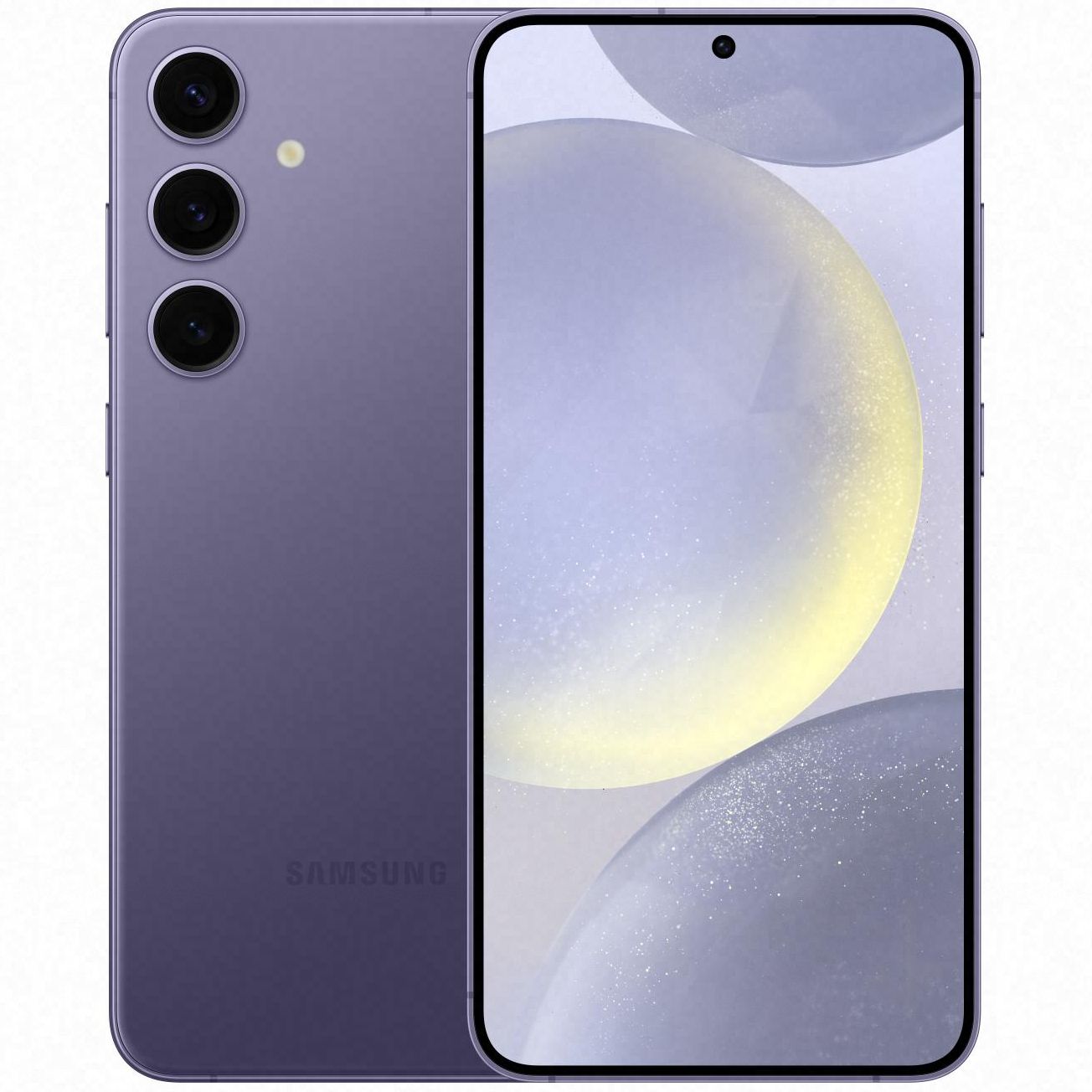
Samsung Galaxy S24+
Top pick
Get a lot for a little less
More of a Goldilocks than a middle child, the S24+ boasts tons of screen space and nearly identical hardware to what its more expensive relative offers. It’s also over 25% cheaper and backed by the same, impressive 7-year update promise.
With that said, though, power users, stylus lovers, and people who demand the best will certainly love the S24 Ultra. It’s a fantastic phone in all ways other than image motion handling, and Samsung’s 7-year software promise makes it a decent investment. If you’re willing to shell out a few hundred more, you won’t be disappointed with Samsung’s top flagship this year.

Samsung Galaxy S24 Ultra
Premium and costly
The best of the best
Large, ultra-refined, and more phone than most people need, the S24 Ultra will satisfy if you demand the best, and don’t mind the cost. Its cameras, design, and display represent Samsung’s best yet.

